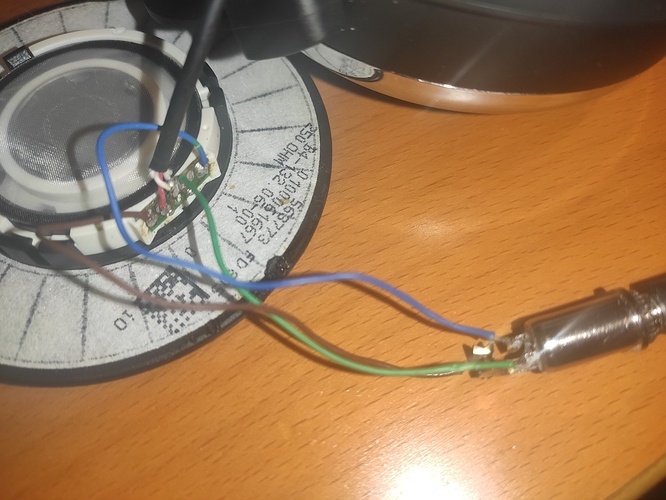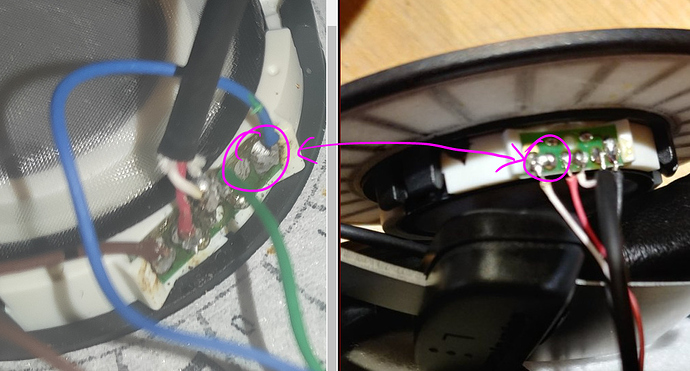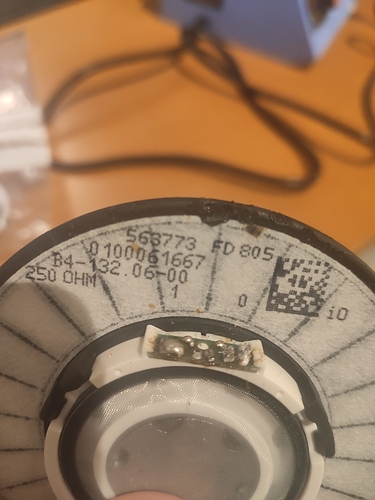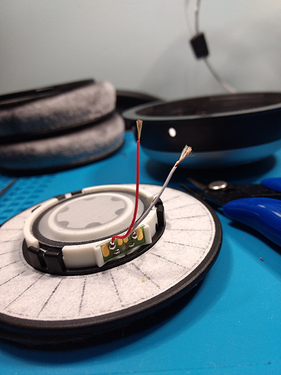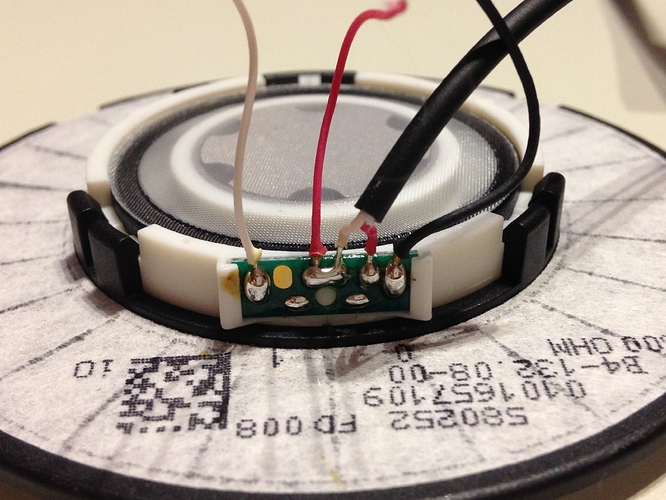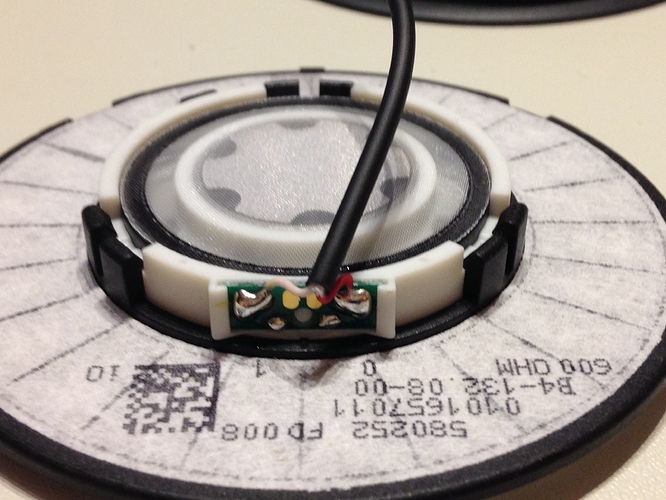Yeah I shouldn’t have disconnected the shieldet wires that go to the other cup. I can’t seem to solder these, they just melt…
That’s exactly what I had. After a lot of effort I managed to get everything wired up again but still nothing on the left driver. Also because I had so much trouble with the wire of the right cup the solder is now connecting everything to each other, so I can’t get any readings from the multimeter anymore. Right channel is still working though, so I got that going for me.
I think I’ll just order a new driver and see if I can find out what I’m doing wrong with the little cables from the right cup. I’m a bit devastated at my failure though.
Have you got a solder vacuum?
Solder Wick (= Solder Braid) would work too.
Nope, I do use wick to remove it.
Yeah I already did that the first time, I can fix it. However I need to find out a good way to solder that annoying stringy wire from the right cup before I get the new driver. Maybe I should buy some flux and just cover it with flux before soldering?
did you tin the wires?
They melted when I tried
There is no way a wire should melt at soldering temperatures.
I know right. So it’s a big rubber thing, in it are 2 shielded wires. I can’t for the life of me seem to strip these wires (I do know how a wire stripper works) which is the first odd thing. When I do manage to get a bit of it stripped, within are a couple strands of copper and a lot of synthetic strands of some sort. These synthetic strands melt a bit and get dark when heated, and I’m having loads of trouble getting solder to stick to it. For the other wires I use regular copper wire which I salvaged from a UTP cable, and this I can solder just fine.
Yes, those cables are a nightmare to strip. I used a disposable razor to VEEEERRRRYYY gently cut around and remove the rubber housing. You also need to remove the synthetic so it’s only the copper.
Keep in mind that when I say gently, whatever you’re thinking oof is still too much force lol.
Even then I STILL stripped some copper along the way, but once you have the copper exposed, you can tin that just fine. So if you have the option of using different cables, it’s worth the peace of mind. Once that is done, they are much easier to solder.
I’ll see if I can get that to work when I get the new driver in, hopefully I won’t screw it up again  .
.
I’m really curious now to find out what broke, maybe I’ll actually try to disassemble the driver to see if I can find anything.
BTW:
Did you solder those annoying shielded wires back to the driver or did you solder them to the jack-chassis connector thing?
I only removed cables from the drivers, used only the existing cables to solder to the new outputs.
I still have trouble believing you screwed up the driver. There isn’t really anything that can go wrong, unless you remove cables, then maybe.
Don’t judge the soldering job please. It was very neat the first two attempts but in the end I got a bit frustrated.
I did check the resistance again and I do get good measurements now. When I measure the multimeter from the jack to the solder points I get a good connection on all of them. The only thing I find that is not correct is the fact that there’s no sound from the left driver…
Is the driver in the picture the left side one?
Because the big difference between your photo and the ones in the guide is these two pads being bridged by solder:
It is, hmm I missed that.
I bridged those two. Tomorrow I will have another good look at the guides, desolder everything but the bridged part and try to connect everything again.
What guide is that picture from? The guide I was looking at looks a bit different.
From this forum. The Lazy Person’s reversible […]-thread.
Keep in mind there are 2 types of connctions to the driver in the DT-series. And 3 is technically all you need.
Okay I did it again and I bridged E and F. I used another chassis so the colors are mixed up (sorry). I’m 100% certain I have the right wires connected to the right solder points though.
In another thread (Beyerdynamic DT880 600ohm Balance Mod) I found this image
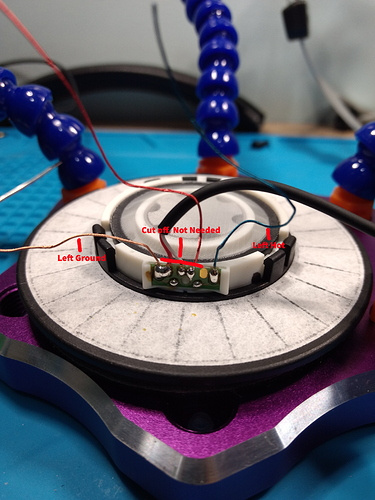
Going by this image I should get music through the left driver by just attaching the left ground and left hot. I know the ground is correct since otherwise the right driver also wouldn’t work, so the problem has the be either with the left driver or the soldering of the left hot. I have tried it with E-F bridged and without E-F bridged, and in both cases there is no music and no resistance when touching left ground and left hot.
With the multimeter I do get a signal if I touch the tip and the left hot solder point, so a connection can get through.
In that other guide I also found this image from the right cup
It seems to my untrained eye that the two outer solder points are ground and hot and that the two inner ones are two pass on the signal. So that would confirm that I should get 250Ohm when touching the two outer-most solderpads if the driver was working.
EDIT: This would make sense I guess: if this is correct the solderpads are grouped in 3 pairs of two pads which are close together. Bridging pads close together wouldn’t make a difference since the two righter are both ground, the two center are both positive of the right channel and the two on the left are both positive of the left channel. That could be why you see them sometimes bridged and sometimes not?
I hope I’m not making an idiot of myself, I have 0 experience with this stuff.
gotta be careful, for one there are different versions of driver connections and two, the last tho threads mentioned here are for making a balanced version, which is not what you want. You need a different kind of connection for that as it separates the left and right driver.
When you’re only making the cable detachable you can basically leave the right hand driver alone.
Here are images of what it looked like for me :
With all the cables is the left one, with only two the right
so those of you who know what your doing feel feree to correct me but what I see is the following.
you connect to the speaker on one end and ground on the other. The middle connection on the left is to connect the right side ground to ground (red goes stright to black)
Then the red goes straight to the white for the signal.
For a detachable cable mod you would have done nothing on the drivers and then attach the cables that went out to the new jack. For an unbalanced mod like in those threads, I had to remove the three cables in the middle of the left and then attach to the new connectors.
